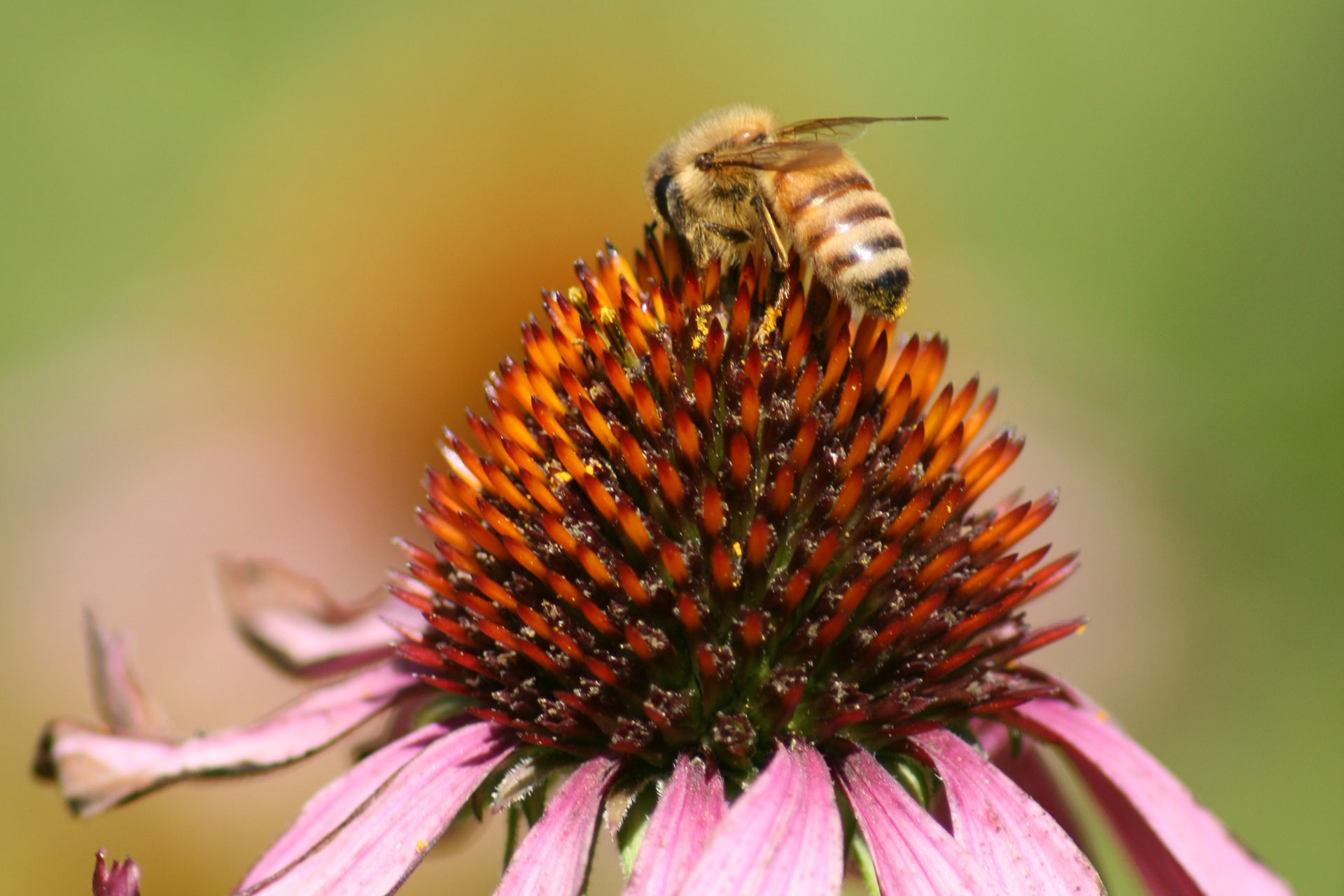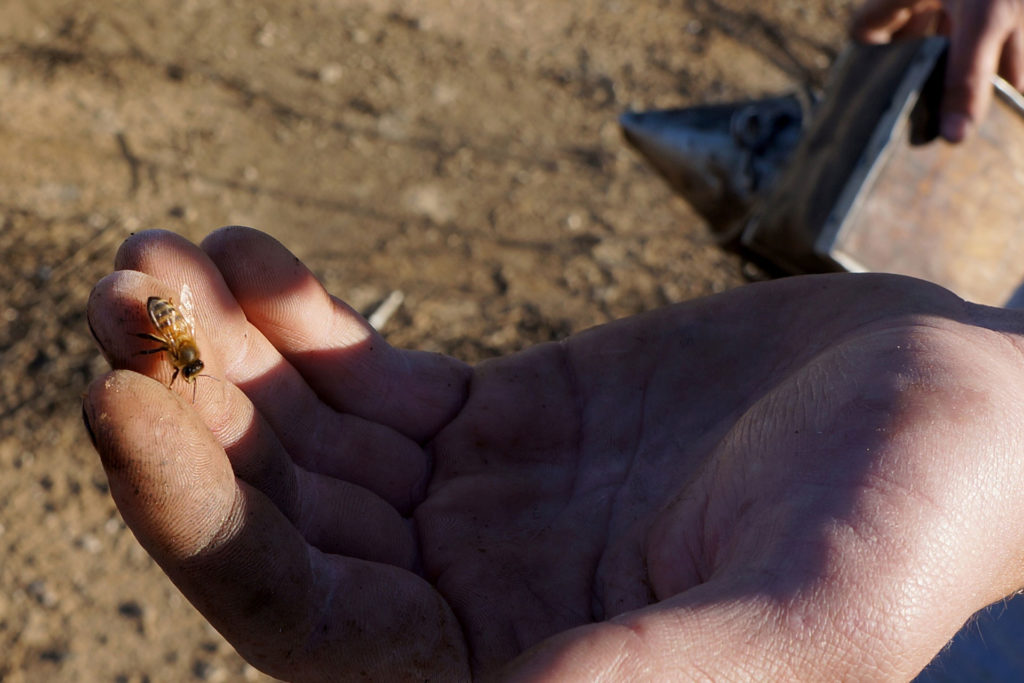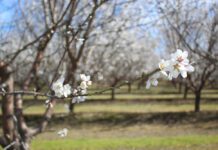
Pollinator protection starts with education and communication, according to panelists at a recent California Department of Pesticide Regulation (DPR) brown bag lunch emceed by DPR Director Val Dolcini.
There are literally thousands of different kinds of pollinators, including many varieties of bees, flies, butterflies, moths, birds, and even mammals such as the Mexican fruit bat, but honeybees are the keystone pollinator, and their numbers are dwindling. Several factors contribute to honeybee decline, including habitat loss, pesticides and mites but it is a problem recognized as far back as the mid-1970s.
To make up for habitat loss, growers can plant new habitat in, around or near their production fields. At least 3 percent of land should be provided for bee and pollinator forage. Native plants are best whenever possible, but even if they aren’t native, planting a variety of flowering plants can also be beneficial. Aim for plants with varying bloom times so bees have pollen available to them for an extended period.
Varroa mites have caused considerable damage to the health of honeybee hives. The mites are an external parasite. They are dark brown to reddish brown in color and flat and oval in shape. Varroa mites are transferred to new colonies on adult bees and then crawl into a brood cell before it is sealed. They then live out their life cycle in the trachea of the bee, shortening a bee’s lifespan. Infested bees don’t fly well, so in a contaminated hive there may be many crawling bees on the ground around the hive. There are currently no controls for varroa.

Avoid Pesticide Problems
“Bee protection starts before bees arrive on a site. Clean water and good food keep bees local and healthy,” said DPR Senior Environmental Scientist Peggy Byerly. “Pay attention to the ‘Bee Box’ on pesticide labels.”
Follow the recommendations and restrictions. Don’t allow pesticide to drift outside the target area. Beware of residual toxicity from pesticides. Adult bees may encounter the residual or carry it back to the nest.
“We’ve been trying to stress to our growers not to use any kind of tank spray during pollination, unless it’s at night. Especially when the temperatures are sixty degrees and above, when pollinators are more active,” said Tim Pelican, Agricultural Commissioner of San Joaquin County. “Even fungicides and fertilizers can harm bees’ respiratory system.”
Education and Communication
Kelly Rourke, director of programs and operations with Pollinator Partnership, suggested people educate themselves on all the things they can do to protect pollinators. It’s also important to educate others, she said. Talk with people you know at social or agricultural events about pollinators, their need for protection, and what can be done to help them thrive.
“Communication between parties is also vital,” Byerly said. Growers or applicators need to let beekeepers know when and where they are spraying pesticides, as well as what they are spraying.
Beekeepers must register in each county where they keep bees. They need to notify the county agricultural commissioner when bees are moved within a county, and when they remove the bees from the county. They can also register hive locations online at BeeWhere and mark the locations with simple pin drops. In 2019, more than 2,000 beekeepers with 904,486 bee colonies registered in the program, or roughly half the California colonies. The registration system will become mandatory in 2021.
“In 2020 the goal is to try to get everyone into compliance, because in 2021 there will be fees or penalties,” to Patricia Bohls, environmental scientist at CDFA’s Bee Safe Program.
This type of communication helps growers be aware of where the bees are so they can plan their spray program accordingly, while beekeepers can also see where spray applications are happening. Applicators must provide their pesticide and location information 48-hours before spraying. It’s up to beekeepers whether they want to be notified or not from applicators, which will be noted on the site. Beekeepers also note how they want to be notified.

“Growers used to call the county and say when they were spraying,” Bohls said. “The county would look within a one-mile radius to see where the bees were. Now it’s all computerized.”
Hives must be marked with the name of the beekeeper, the beekeeper’s phone number, city and state. The information must be posted on a sign at the site of the hives, or stenciled onto the hives. If several hives are placed on a pallet, at least one of the hives on the pallet must be stenciled.
“It’s really the beekeepers’ duty to make sure these bees are registered. If beekeepers don’t register, they don’t get warned before an application,” Pelican said.
Growers face up to $1,000 in fines if improper spray notification leads to a bee kill in registered hives. Bees are treated as livestock. In the case of a bee kill, an inspection is done. Bees are gathered and sent to a lab to make sure it was pesticide that killed them and that the application was made within a one-mile radius of the hive.
Registering may help deter bee theft, too. “One-million dollars’ worth of bees in Fresno were stolen out of fields,” Pelican said, so the county ag commission is working with law enforcement.
Efforts to protect pollinators are paying off, Bohls added. She noted improvement in apiary theft prevention and a decrease in apiary pest pressure, and in apiary stress due to pesticide exposure.
The current focus of Bee Safe is to train county and apiary health inspectors, and to promote the program.
For more on the Apiary Protection Act, go online to Division 13 Bee Management and Honey Production (Sections 290000-29736) of the California Food and Agricultural Code.















